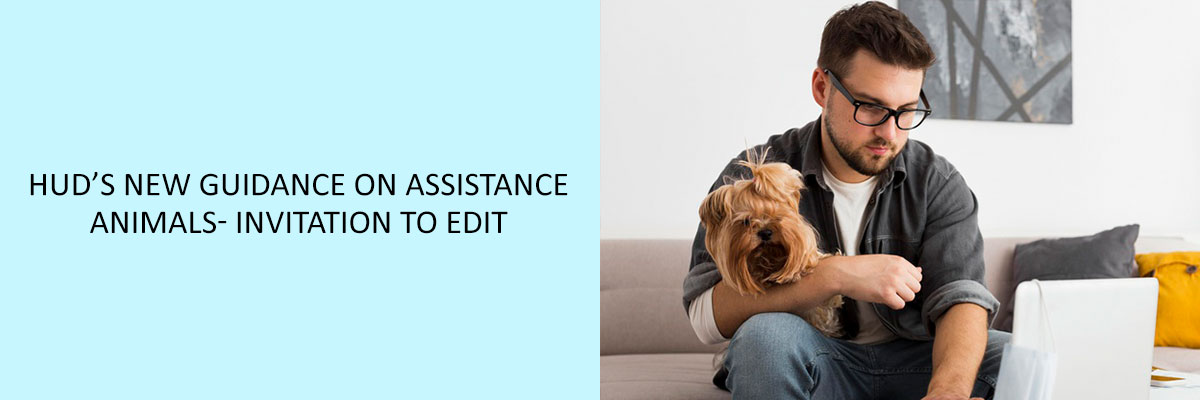On 28th January, HUD (the Department of Housing and Urban Development) announced new guidelines on how housing providers can abide by the Fair Housing Act when evaluating an appeal for an assistance animal by a person with a disability. The housing providers have appealed to the Department of Housing and Urban Development to present guidelines on assistance animal compliance problems with which the enterprise has strived. HUD’s Assistance Animal Guidance inscribes these problems and presents a collection of best practices to abide by the Fair Housing Act.
The Fair Housing Act on the Assistance Animal Guidance
The Fair Housing Act prohibits discrimination by way of background in housing against a person with a disability. A disability is described as a mental or physical impairment that considerably restricts one or more than one major life activity. The Fair Housing Act needs housing providers to authorize a modification or exception to a rule, service, practice, or policy when essential to provide a person with a disability equitable access to practice and enjoy the housing. It is referred to as an appeal for reasonable accommodation. The most common appeal is to make an exemption to the pet policy to authorize an assistance animal. The animal that performs tasks, assists, does work, or presents therapeutic emotional support and assistance because of a disability is an assistance animal. Assistance animals are not considered as pets and, no deposit or fee can be imposed for an assistance animal. If the disability of a person is not readily visible, a housing provider can ask for evidence that the person has a disability and related requirement for an assistance animal.
HUD’s New Guidance
The new guidelines of HUD consist of two parts. The first part presents step-by-step best guidance on assessing a person’s appeal for an assistance animal. The second one guides documenting a person’s requirement for an assistance animal.
Some of the highlights of the new HUD guidance are:
- HUD recommends beginning the evaluation process by ascertaining whether the animal is a service animal or not under the ADA. A dog is a service animal that is individually trained to perform work for the advantage of a person with a disability.
- If the pet is not a service animal, then the housing provider would require to evaluate whether the pet is an assistance animal or not under the Fair Housing Act. And whether the person has a disability or related need for the animal or not.
- If it is readily visible that the person has a disability and, there is a need for the service animal, then the housing provider does not need documentation.
- If the disability of the person is not readily visible, the housing provider can ask for documentation that the person has a disability and related requirement for the animal. For instance, it may not be readily visible that a person with post-traumatic stress ailment, depression, or anxiety has a disability and needs an assistance animal to give emotional support.
Final Words
It is necessary to keep in mind that in service animals, the disability does not need to be visible. If the individual states they are disabled and explains what the dog has been instructed to do, then the housing provider must grant the request.
To know more about HUD’s New Guidance on Assistance Animals, join the Compliance Prime webinar.


